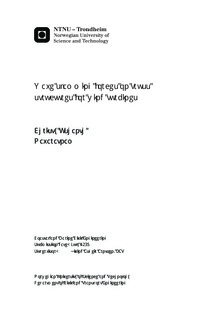Wave slamming forces on truss structures for wind turbines
Master thesis
Permanent lenke
http://hdl.handle.net/11250/232804Utgivelsesdato
2013Metadata
Vis full innførselSamlinger
Sammendrag
Generally the foundations of offshore wind turbines are steel truss structures which are exposed to wave slamming forces due to breaking waves, typically plunging breaking waves in shallow water. Calculations show that the forces from the plunging breaking waves are governing the design responses of the structure and the foundations. However, there are considerable uncertainties on the calculated plunging breaking wave forces. This research study is to investigate the wave slamming forces acting on different sections of the truss structure for wind turbines. A physical model of 1:50 scale was built at the hydrodynamic laboratory, NTNU. A large number of experiments were carried out on various sections of the truss structure such as front section and side section. Besides, two different size individual piles places at the position of the vertical legs of the truss structure were tested in order to check the size effects. All the tests carried out for regular waves with different wave height and wave periods.The recorded total responses have been decomposed into quasi static and dynamic components. Then dynamic component of the total response is analysed using frequency response function (FRF) method or the transfer function method. The transfer function relates the impact force and the responses and an impulse hammer was used to obtain the transfer function. Duhamel integral method was used only for two individual cylinders in addition to the frequency response function method. The analysed results show that the measured slamming forces are much lesser than the calculated slamming forces in all the cases. This discrepancies could be due to the size effects, scale effects and unfavourable wave form when it hits the structure. The entrained air during breaking process also influences in the results as it is different in the small scale test and in reality. It is recommended to perform the large scale tests to overcome such discrepancies.
